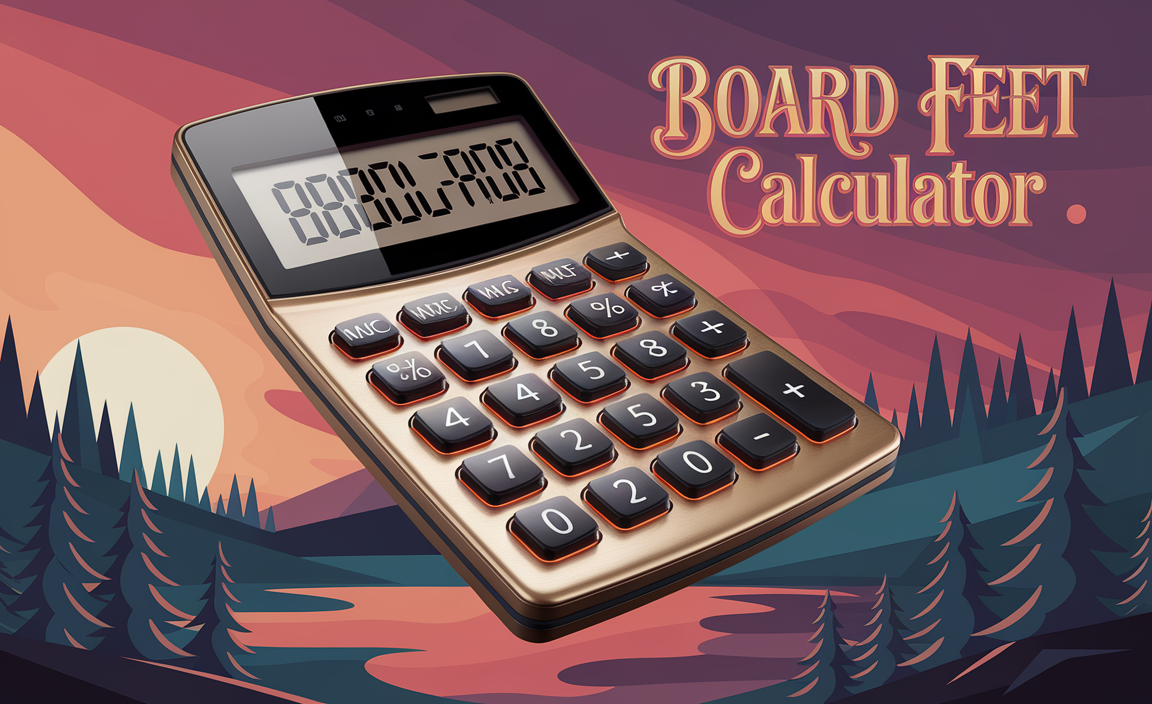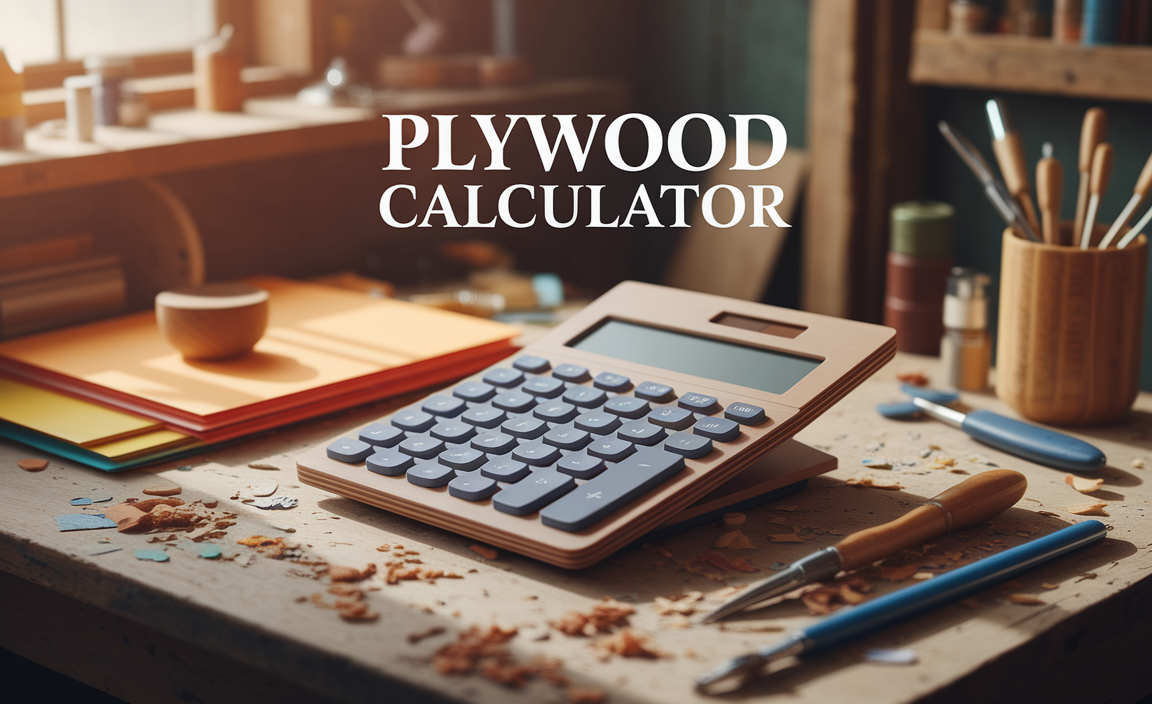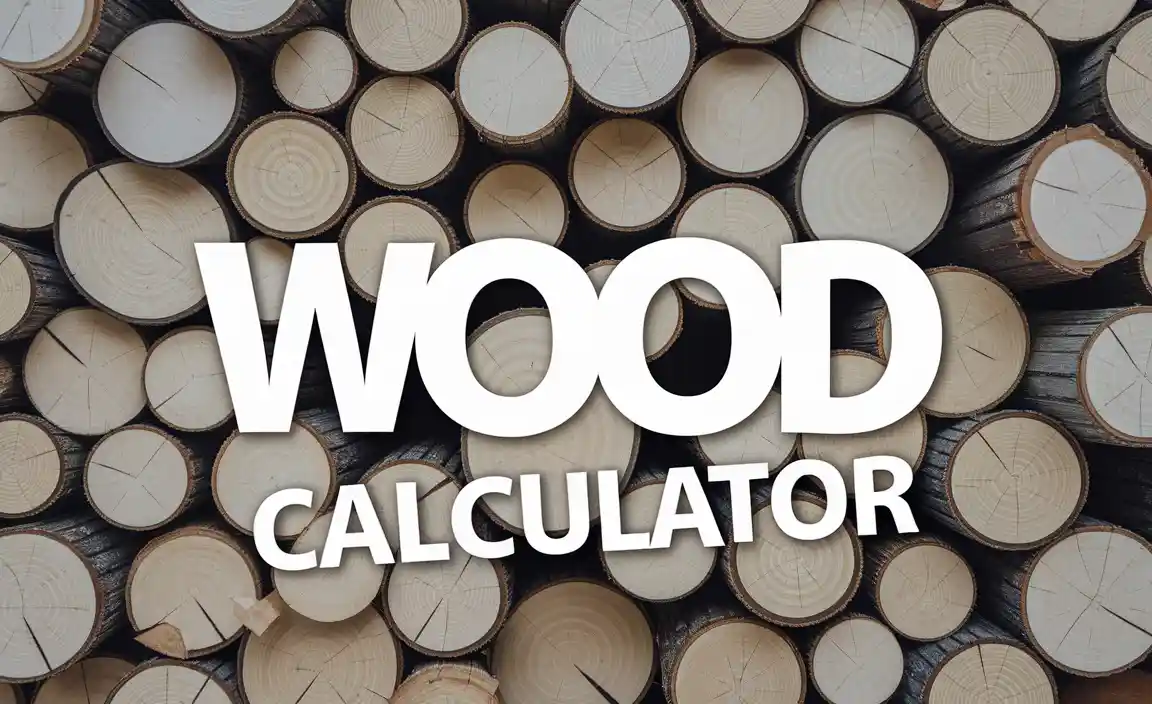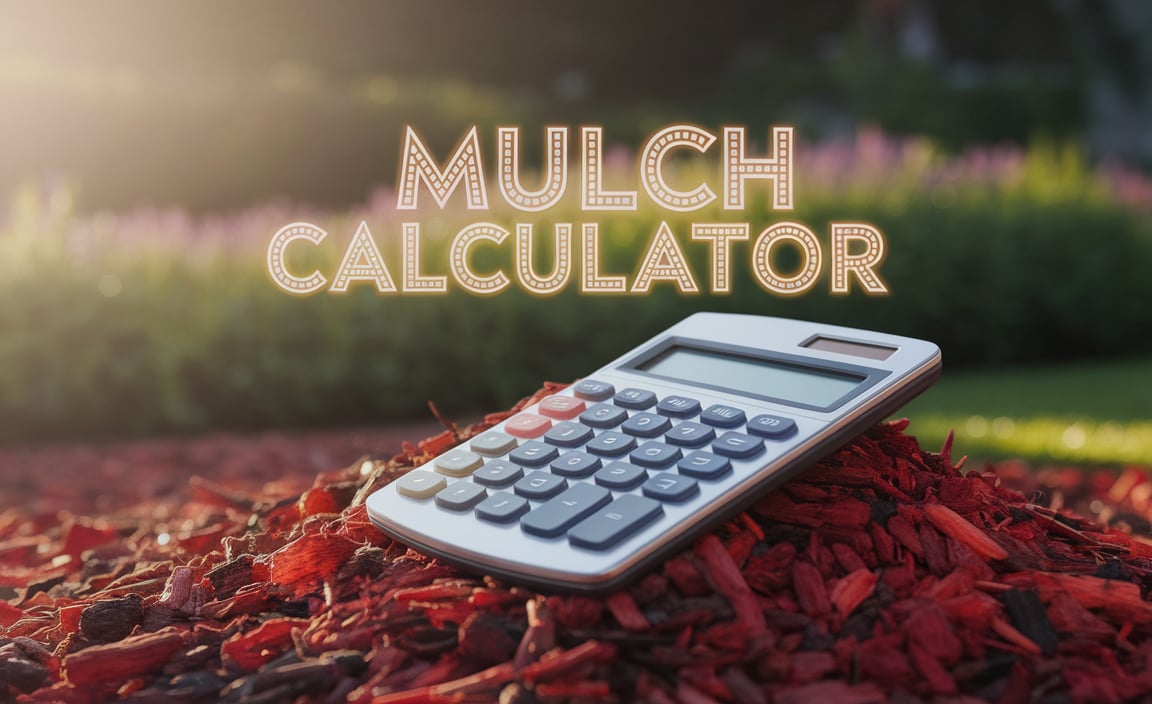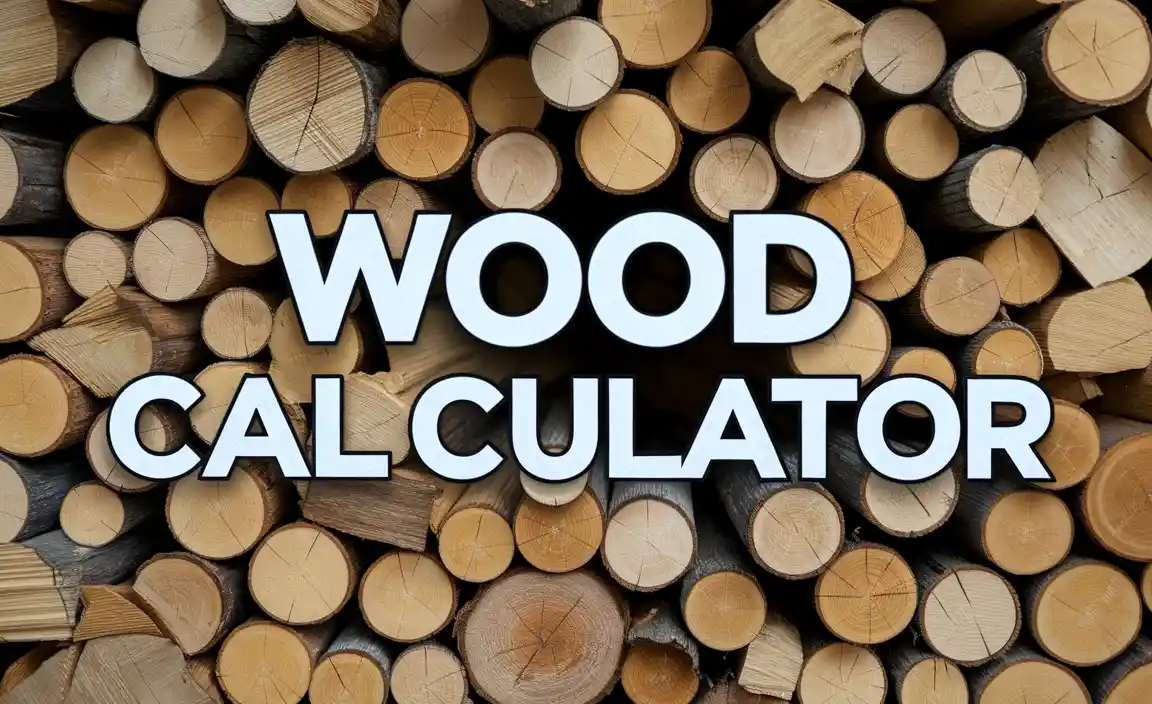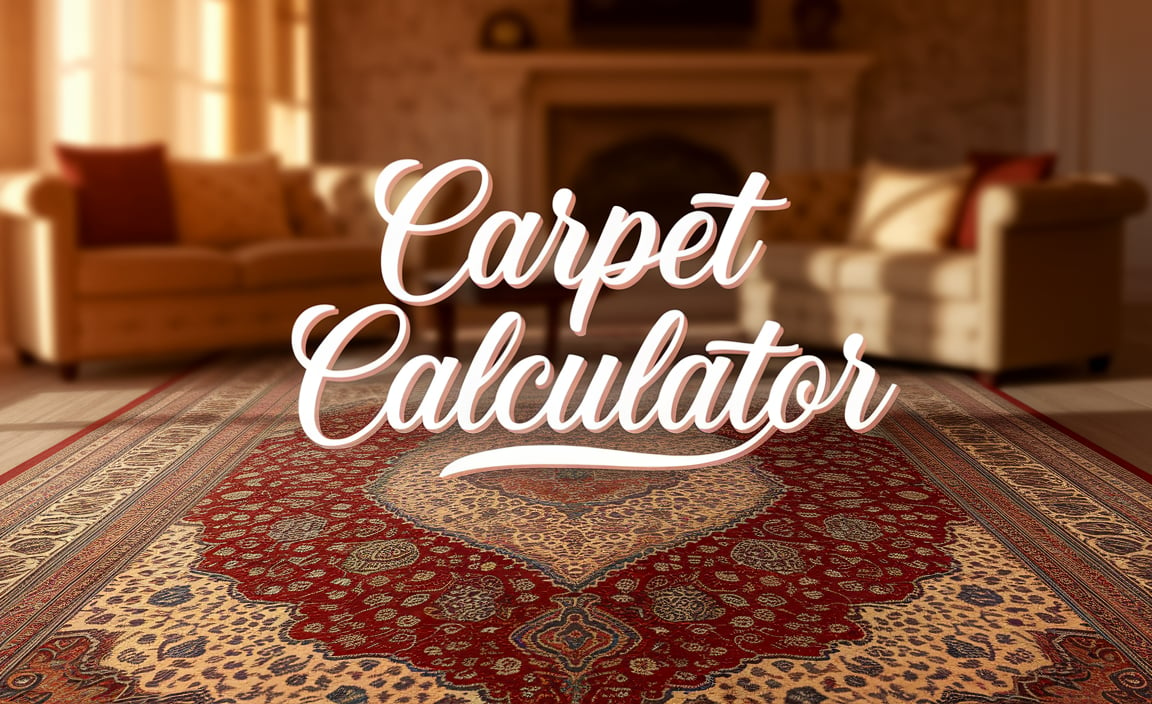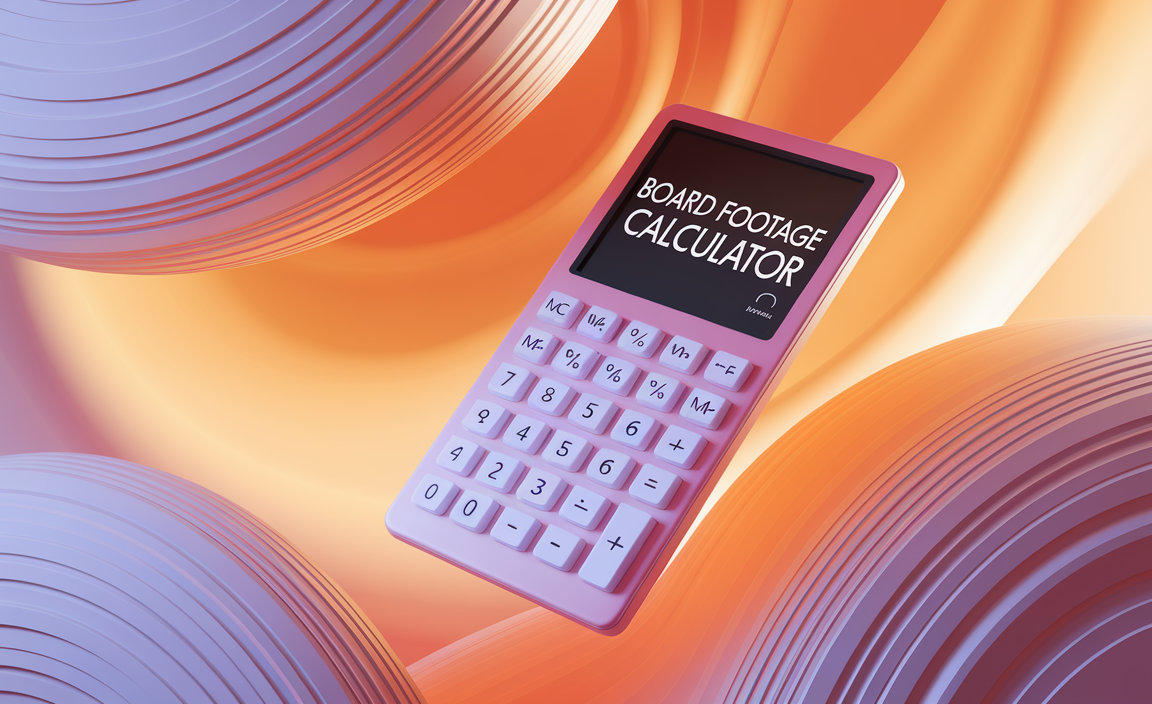Isn’t it amazing how much you can calculate with just a few simple tools? Imagine trying to figure out how much dirt you need for your new garden. You might feel overwhelmed at first. But here’s where a cubic yards calculator comes to the rescue!
Whether you are working on a big project or a small one, this tool makes everything easier. It helps you find out how many cubic yards of material you need. Think about it! You wouldn’t want to buy too little or too much. That would lead to extra costs or delays.
Did you know that a cubic yard is the same as a cube that is three feet on each side? It is true! This simple measurement can help with all sorts of tasks. From filling a pool to building a patio, knowing how to use a cubic yards calculator can be a game changer.
So, are you ready to unlock the power of cubic yards? Let’s dive into how this handy calculator works and why it’s a must-have for your next project!
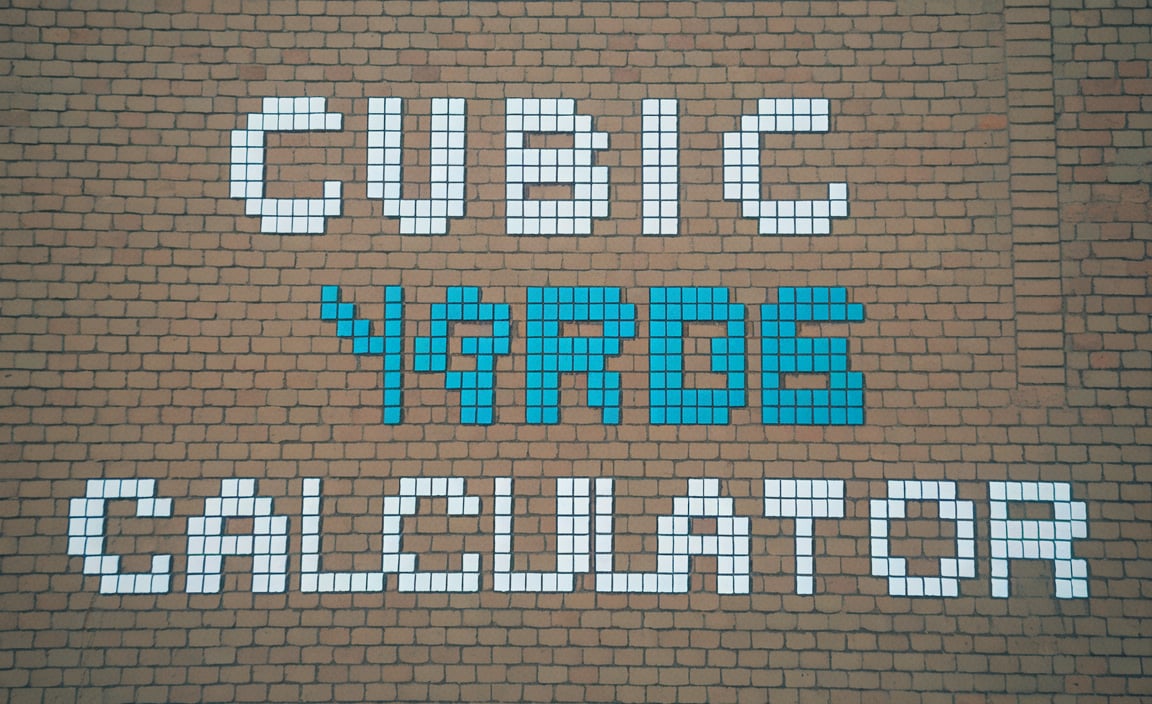
Table of Contents
Efficiently Use The Cubic Yards Calculator For Your Needs
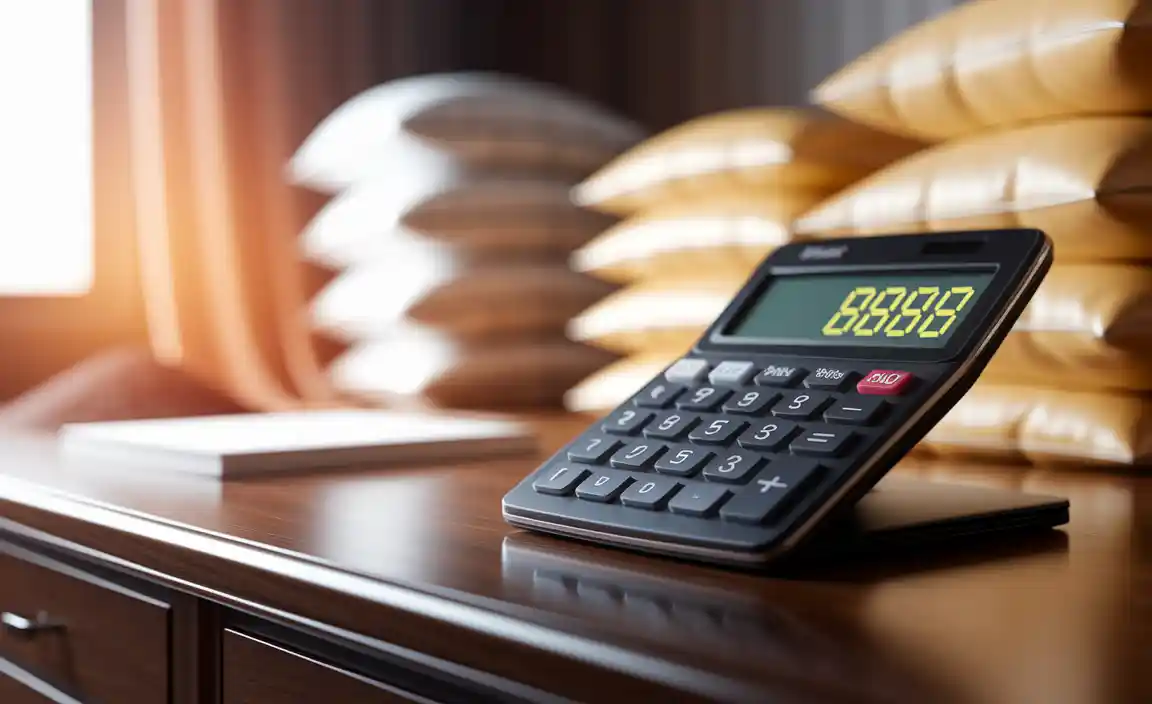
Calculating cubic yards can be tricky. A Cubic Yards Calculator helps make this task easier. It finds the volume of materials, like soil or concrete, by multiplying length, width, and height. Did you know that one cubic yard is enough to fill a small car? This tool saves time and helps plan projects efficiently. Simply enter your measurements, and let the calculator do the rest for you! Understanding this simple math can make a big difference in your next project.
What is a Cubic Yard?
Definition of a cubic yard. Importance of cubic yards in various industries.
A cubic yard is a simple way to measure volume. Imagine a box that’s 3 feet wide, 3 feet long, and 3 feet tall. That box holds one cubic yard of space! This measurement is important in many jobs, like construction and landscaping. Builders use it to figure out how much concrete or soil they need. In fact, one cubic yard equals about 27 cubic feet. Talk about a lot of space—enough to make a small swimming pool (minus the water slide)!
| Industry | Use of Cubic Yards |
|---|---|
| Construction | Calculating materials needed |
| Landscaping | Estimating soil or mulch |
| Shipping | Determining cargo space |
Why You Need a Cubic Yards Calculator
Benefits of using a cubic yards calculator. Common scenarios requiring cubic yard calculations.
Need to measure stuff for a project? A cubic yards calculator is your new best friend! It helps you find out how much space materials like soil or concrete will take up. This tool is super handy for yard work, building projects, or even when you’re just trying to fill a pool—without turning into a math wizard!
Using this calculator is easy. You input your measurements, and it does the math for you. No more guessing games or needing a degree in math! Whether you’re landscaping or making a big pour, a cubic yards calculator saves time and avoids mistakes.
Here are some situations where this tool shines:
| Scenario | Description |
|---|---|
| Landscaping | Calculate how much mulch or soil you need. |
| Concrete Work | Determine how much concrete for patios or slabs. |
| Filling a Pool | Know the volume of water you’ll need! |
So, why sweat? Use a cubic yards calculator, and let the numbers do the magic. You’ll be the project champ in no time!
How to Use a Cubic Yards Calculator
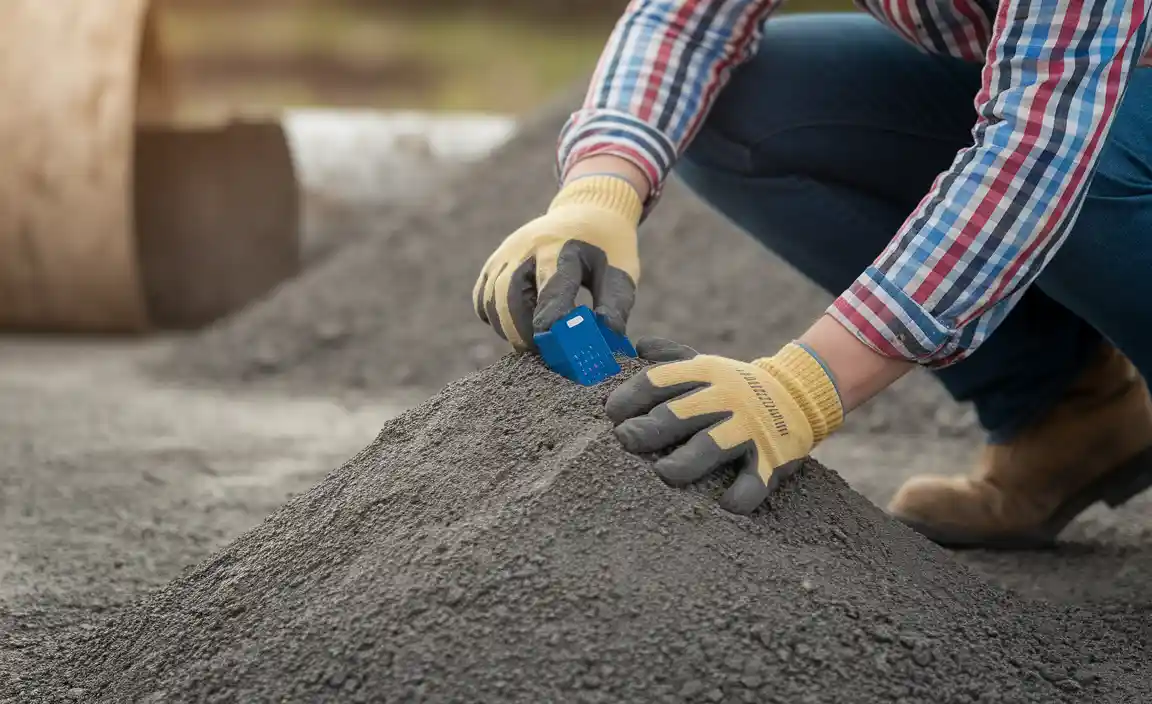
Stepbystep guide on using an online calculator. Examples of inputs and expected outputs.
Using an online calculator for cubic yards is easier than pie—at least the kind without the crust! First, find a cubic yards calculator online. Next, enter the dimensions of your space: length, width, and height. Don’t forget to measure in feet! Click calculate, and voilà! You have your cubic yards. For example:
| Length (ft) | Width (ft) | Height (ft) | Cubic Yards |
|---|---|---|---|
| 10 | 5 | 2 | 3.08 |
Remember, no calculator can measure your sense of humor, so feel free to chuckle after you find your answers!
Different Types of Materials Measured in Cubic Yards
Common materials (like soil, concrete, mulch). Impact of material type on calculations.
Different materials need different amounts when measured in cubic yards. Some common materials are:
- Soil: Often used for gardening, soil can pack tightly.
- Concrete: This is heavy and needs careful measurement.
- Mulch: Lightweight and fluffy, it covers ground well.
This means your calculations can change. If you know what you’re using, you’ll get better results. Choosing the right material matters a lot in your math!
What materials can be measured in cubic yards?
Many materials like soil, gravel, and concrete can be measured this way. Each has a different density, affecting how much you need.
Manual Calculation of Cubic Yards
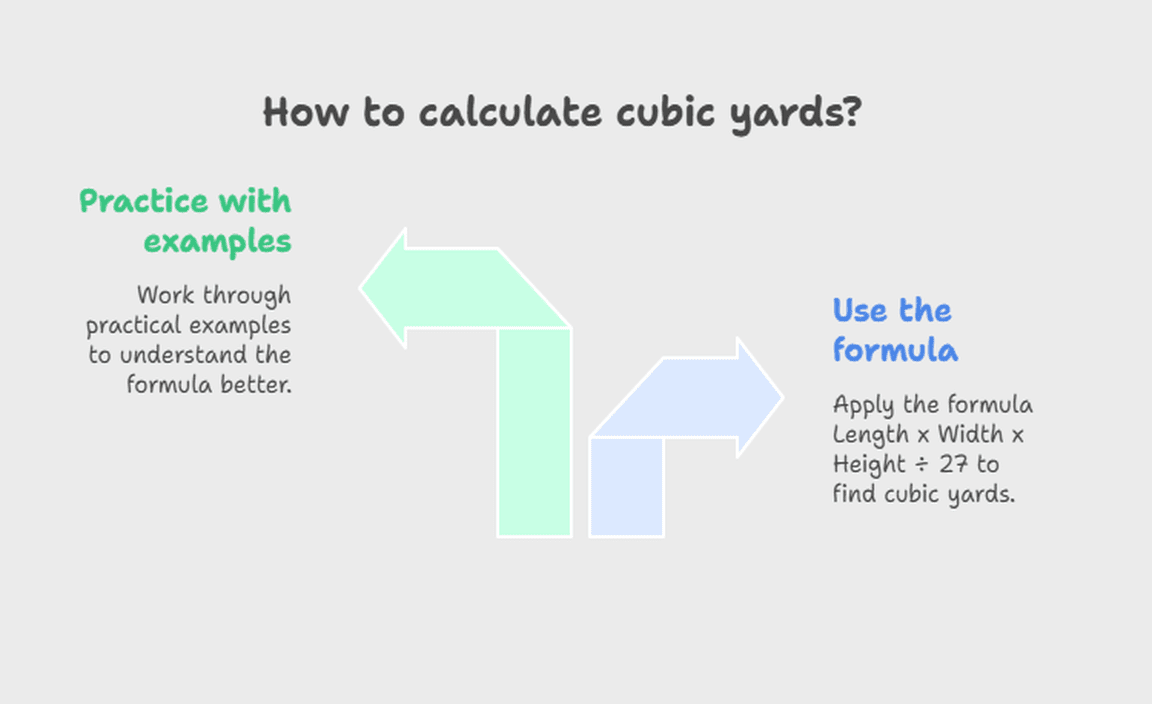
Formula for calculating cubic yards. Practical examples to practice manual calculations.
To find cubic yards, you can use this simple formula: Length x Width x Height ÷ 27. This helps you get the volume in cubic yards. Want to practice? Here are some examples:
- Example 1: A pool is 10 feet long, 4 feet wide, and 2 feet deep. 10 x 4 x 2 ÷ 27 = 0.74 cubic yards.
- Example 2: A garden bed is 6 feet long, 3 feet wide, and 1 foot high. 6 x 3 x 1 ÷ 27 = 0.67 cubic yards.
Try using this formula with your own measurements and see what you get!
What is the formula for calculating cubic yards?
The formula for calculating cubic yards is Length x Width x Height ÷ 27. This will give you the volume in cubic yards!
Comparison of Online Cubic Yards Calculators
Review of popular calculators available. Features to look for in a good cubic yards calculator.
Online cubic yards calculators help people measure space easily. Some popular ones are Calculator Soup, Hassle Free Calculators, and BlockLayer. Look for features like simple design, clear instructions, and instant results. Good calculators often have options for different shapes and units.
What should I look for in a cubic yards calculator?
Features to consider include:
- User-friendly interface
- Multiple shape options
- Unit conversion
- Instant calculations
Each calculator offers unique traits. Choose one that fits your needs best. This way, you’ll find measuring your space much easier!
Common Mistakes to Avoid When Calculating Cubic Yards

List of frequent errors in calculations. Tips to ensure accuracy in measurements.
Calculating cubic yards can be tricky. Common mistakes can lead to big errors. Here are errors to watch out for:
- Not measuring correctly.
- Forgetting to convert units.
- Ignoring the shape of the area.
To ensure accuracy:
- Double-check your measurements.
- Use a calculator for conversions.
- Visualize the space before measuring.
Remember, even small mistakes can cause big problems. Stay careful and measure right!
What are common mistakes when using a cubic yards calculator?
The usual errors include incorrect measurements, wrong unit conversions, and misjudging the shape of the area you are measuring. Check twice to avoid these slips!
Advanced Features of Cubic Yards Calculators
Algorithms behind advanced calculators. Additional features like material weight/cost estimators.
Advanced calculators use smart algorithms to give accurate results. These algorithms consider the shape and size of the area you measure. They also help estimate the weight and cost of materials. Here are some extra features:
- Material Weight Estimators: Calculate how much different materials weigh.
- Cost Estimators: Know how much your materials will cost.
- Customizable Settings: Adjust settings for unique projects.
These features make it easier to plan your project and stay on budget. Understanding these options can help you make better choices.
What are the benefits of advanced calculators?
Advanced calculators provide precise calculations and offer valuable features to help you manage costs and materials.
Real-World Applications of Cubic Yards Calculators
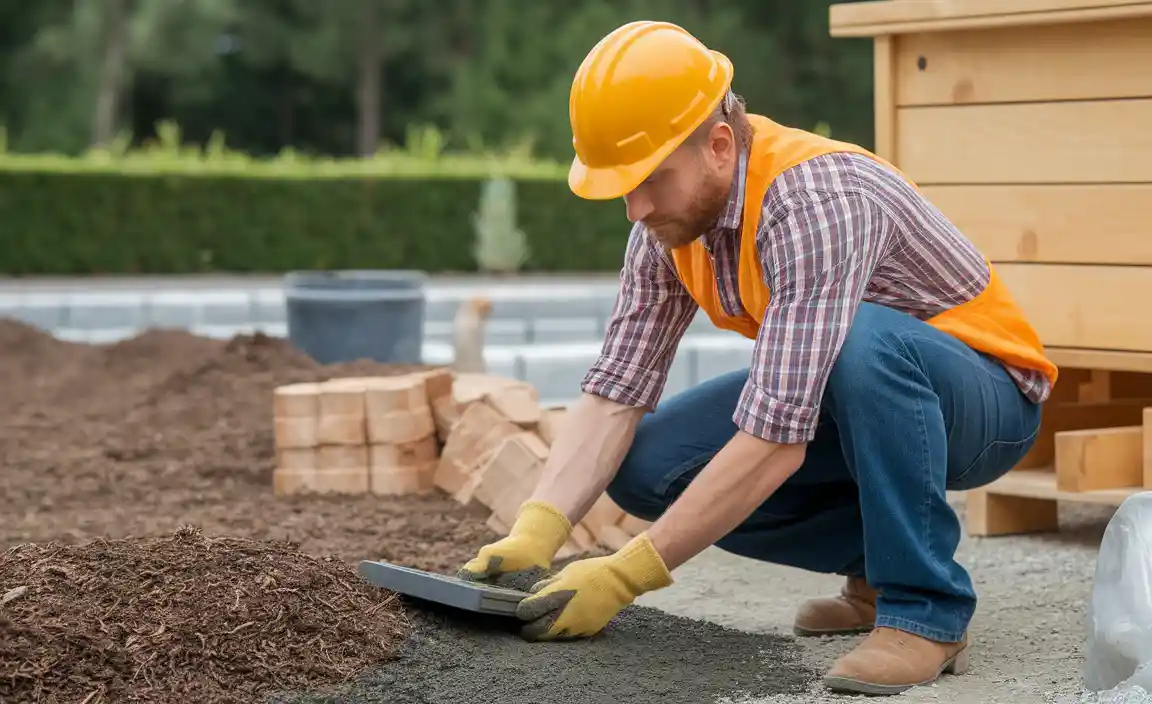
Examples from construction, landscaping, and gardening. Case studies demonstrating effectiveness.
Cubic yards calculators are very useful in real life. They are valuable tools in construction, landscaping, and gardening. Here are some examples:
- In construction, workers need the right amount of concrete. A cubic yards calculator helps them plan how much is needed.
- Landscapers use these calculators to figure out how much mulch or soil they need for a project.
- Gardeners can plan how much compost or fertilizer to buy. This saves time and money.
Case studies show that using these calculators improves efficiency and reduces waste. Many experts agree they are essential for successful planning.
Why use a cubic yards calculator?
Using this tool can help you save resources and money. It gives you accurate estimates for your projects. This prevents overbuying or underbuying materials.
Tips for Choosing the Right Calculator
Factors to consider (ease of use, accuracy, additional features). Recommendations for specific use cases.
Choosing the right calculator can make your tasks easier. First, check how easy to use it is. A simple layout helps avoid confusion. Next, consider accuracy. A precise calculator gives you the right numbers every time. Look for additional features like memory and history. These can be handy! For specific tasks, like landscaping or concrete projects, pick a calculator designed for that purpose.
What features should I look for in a cubic yards calculator?
Look for these features:
- Ease of Use: It should be simple to navigate.
- Accuracy: Ensure it calculates correctly.
- Extra Tools: Features like unit conversions are helpful.
Frequently Asked Questions About Cubic Yards Calculators
Common queries answered. Myths and misconceptions about cubic yards measurements.
Many people wonder how to use a cubic yards calculator. It’s easier than pie! Just input your measurements, and voilà! Your answer is at your fingertips! There are some myths too. Some think cubic yards only count concrete. Nope! You can measure soil, mulch, and even snuggle-worthy blanket piles! Let’s bust a popular myth: “Cubic yards are a mystery.” Not true! They’re simply a fancy way of measuring volume, like filling your backpack with too many snacks.
| Common Questions | Answers |
|---|---|
| What is a cubic yard? | It’s a cube that measures 3 feet on each side! |
| Can I use this for gardening? | Absolutely! It’s perfect for soil and compost. |
Conclusion
In conclusion, a cubic yards calculator helps you find the right amount of materials for your projects. It’s easy to use and saves time. When planning a project, remember to measure your space first. You can find many online calculators to help you. Explore these tools to make your work easier and more efficient!
FAQs
Certainly! Here Are Five Related Questions On The Topic Of Cubic Yards Calculators:
Sure! A cubic yard calculator helps you find out how much space something takes up. You can use it for things like soil, mulch, or gravel. To use it, you need to enter the length, width, and depth in yards. The calculator will give you the total in cubic yards. This makes it easier to buy just the right amount of materials!
Sure! Please provide the question you would like me to answer, and I’ll be happy to help.
What Is A Cubic Yard, And How Is It Calculated?
A cubic yard is a way to measure space. It means a box that is one yard long, one yard wide, and one yard high. To calculate it, we multiply the length, width, and height in yards. So, if a box is 1 yard high, 1 yard wide, and 1 yard long, it holds one cubic yard. This helps us know how much stuff can fit inside!
How Do You Convert Measurements From Feet Or Inches To Cubic Yards For Use In A Cubic Yards Calculator?
To convert feet or inches to cubic yards, we need to follow a few steps. First, measure the length, width, and height of the space in feet. Then, multiply those three numbers together to find cubic feet. Next, divide that number by 27, because there are 27 cubic feet in one cubic yard. Now you have the measurement in cubic yards!
What Types Of Materials Can Be Measured Using A Cubic Yards Calculator, And How Do Usage Scenarios Differ For Each?
You can use a cubic yards calculator for different materials like soil, gravel, and concrete. For soil, you might need it when planting a garden or filling a hole. With gravel, you might use it for making a driveway or path. For concrete, you would need it to build a patio or a sidewalk. Each material helps in different projects, so it’s good to know how much you need!
Are There Any Online Tools Or Apps That Provide Cubic Yards Calculations, And How Accurate Are They?
Yes, there are many online tools and apps that can help you calculate cubic yards. These tools usually ask for the length, width, and height of an area. You just plug in the numbers, and they do the math for you. Most of the time, they are very accurate. But always double-check if you’re unsure!
How Can Understanding Cubic Yards Help In Estimating The Amount Of Concrete Or Soil Needed For A Construction Project?
Understanding cubic yards helps you know how much concrete or soil you need. A cubic yard is a space that is one yard long, one yard wide, and one yard high. When you measure the area where you want to put concrete or soil, you can figure out how many cubic yards fit there. This helps you buy the right amount and not waste materials. So, you can save time and money for your project!
Resource:
-
Understanding Volume Measurements: https://www.britannica.com/science/volume-measurement
-
Concrete Estimating Tips from Industry Experts: https://www.cement.org/learn/concrete-technology/concrete-construction/concrete-placing/estimating-concrete-quantities
-
Soil Volume and Density Explained: https://www.nrcs.usda.gov/resources/data-and-reports/soil-properties
-
Landscaping Cost Estimator Tool: https://www.homeadvisor.com/cost/landscape/
